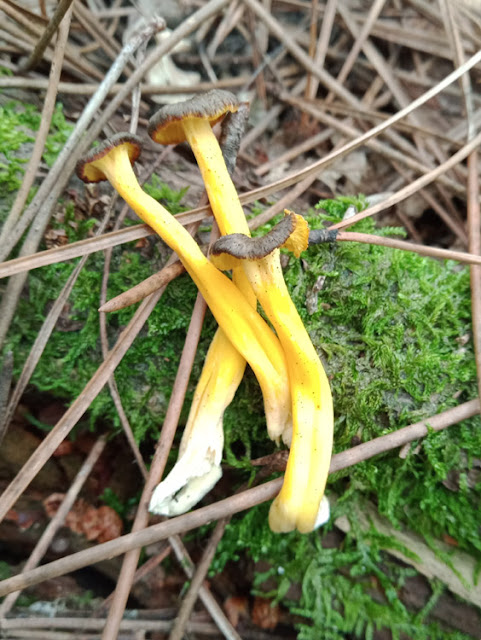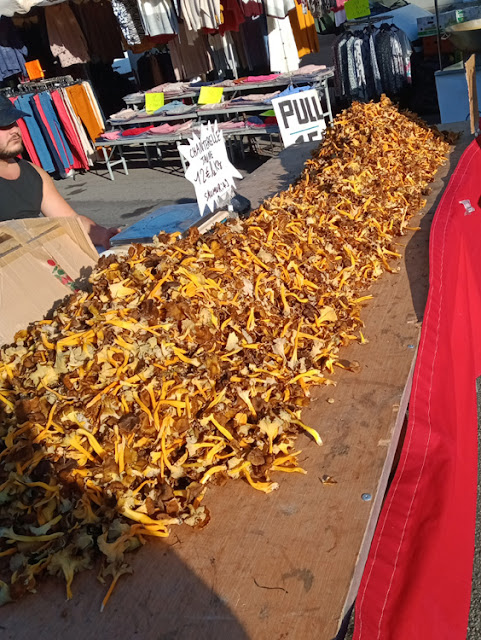These are considered the finest mushroom of all by some of my elderly and experienced fungi foraging friends. Until recently I had never encountered them in the forest, only in the market. They are very small, and if they didn't have bright yellow 'stems' they would be completely camouflaged and hidden in their natural pine forest habitat.
 |
Trumpet Chanterelles from the Sologne for sale at Loches market.
|
Their scientific name is Craterellus tubaeformis, or in French, la Chanterelle en tube.
 |
| A few Trumpet Chanterelles, freshly foraged and laid out on some moss to photograph. [Update: these ones are the closely related Yellowfoot C. lutescens.] |
Where they grow they are usually abundant, but because of their size they can be a bit fiddly to gather and sort from the pine needles. Lazy, selfish and greedy foragers have been known to use a rake, but this is really frowned upon because it damages the mycellium ('roots'). And frankly, I can't imagine it saves any time, as you would also gather up so many pine needles.
 |
| Fresh young Trumpet Chanterelles. The underside goes grey with age, and they don't have gills, but pleats. [Update: these ones are the closely related Yellowfoot C. lutescens.] |
They can be cooked from fresh or frozen, or dried and rehydrated. They cannot be cultivated.
 |
| Trumpet Chanterelles in typical habitat, under pine trees but in mixed forest. [Update: these ones are the closely related Yellowfoot C. lutescens.] |
 |
Trumpet Chanterelles at the market in La Roche Posay.
|
 |
Trumpet Chanterelles wild harvested near Saumur and for sale in Loches market on Saturday.
|







No comments:
Post a Comment